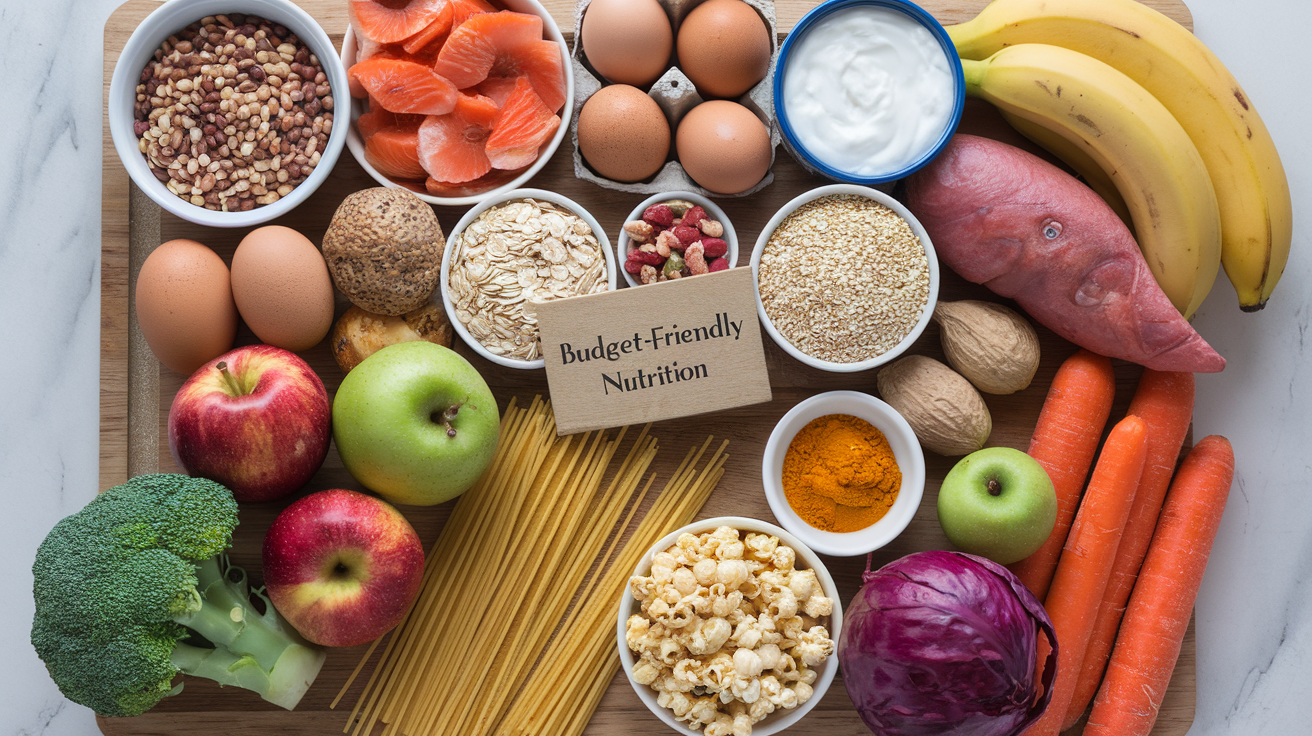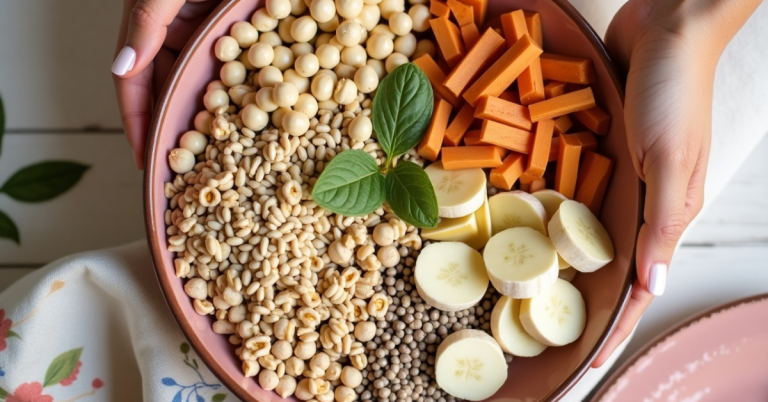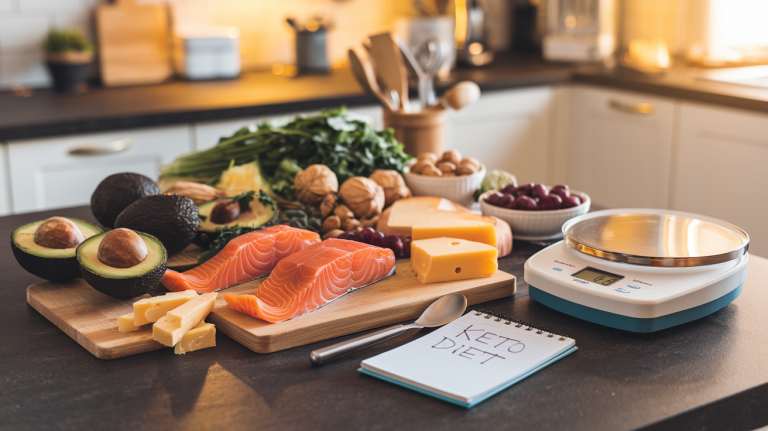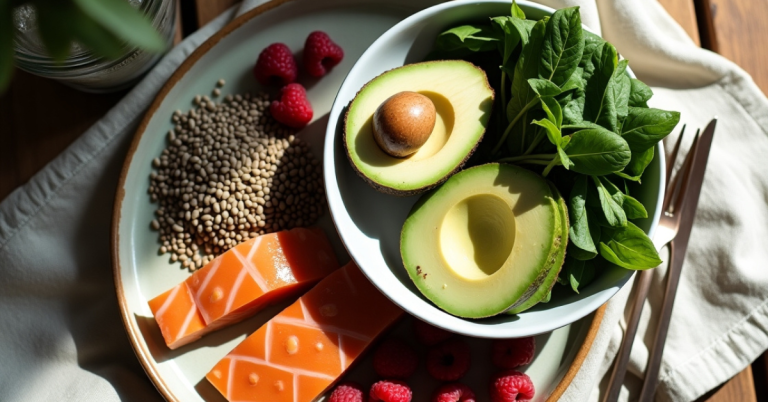Superfoods on a Budget: 7 Affordable Powerhouse Ingredients
Are you tired of scrolling through endless lists of expensive superfoods, feeling like a healthier lifestyle is out of reach? 🥑💸 You’re not alone. Many believe that nutritious eating comes with a hefty price tag, but we’re here to bust that myth wide open!
Introducing your new secret weapon: affordable superfoods! 🦸♀️ These budget-friendly powerhouses pack a nutritional punch without breaking the bank. From protein-rich legumes to antioxidant-loaded frozen fruits, we’ve uncovered seven incredible ingredients that will revolutionize your diet and your wallet. Imagine transforming your meals with nutrient-dense options like eggs, sweet potatoes, and canned fish – all while keeping your grocery bill in check.
Ready to embark on a journey of delicious discovery? 🌟 In this blog post, we’ll dive into the world of wallet-friendly superfoods, explore smart shopping strategies, and even debunk common myths about healthy eating. Get ready to supercharge your diet without supercharging your expenses!
Affordable Protein Powerhouses
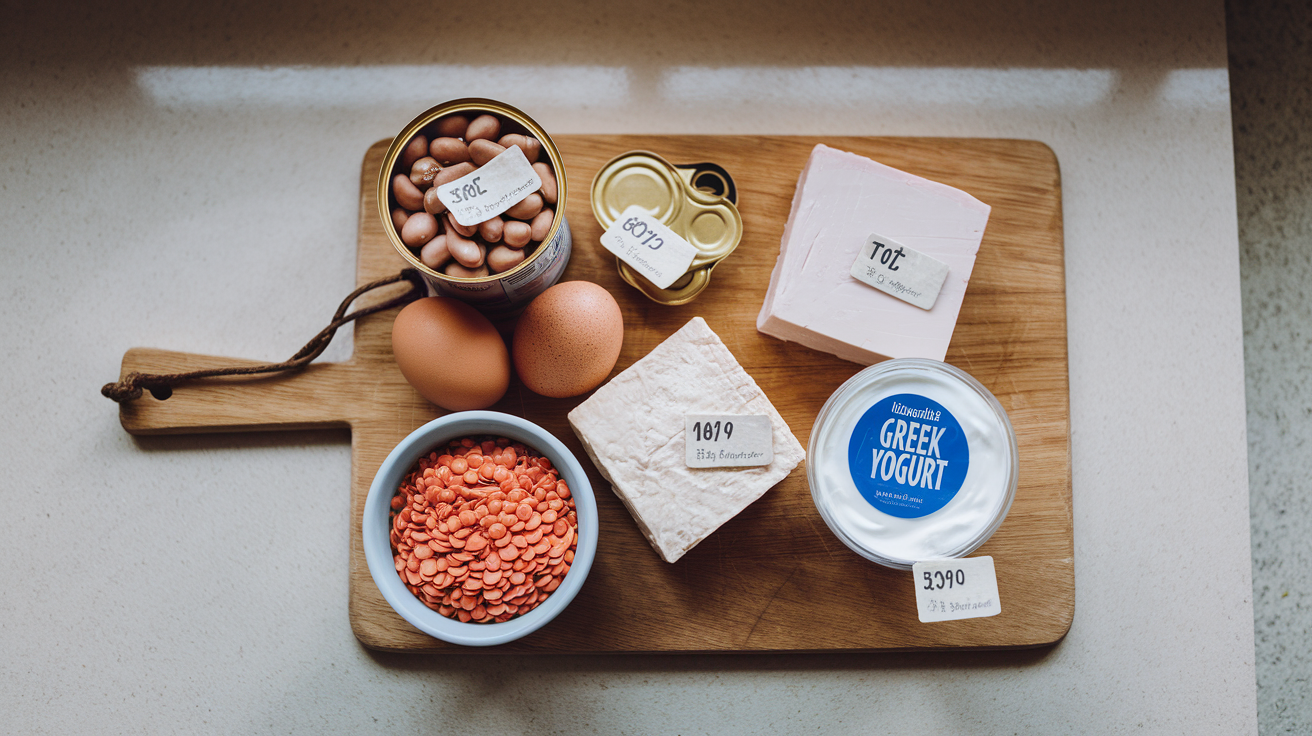
A. Legumes: High in protein and fiber
Legumes are an excellent source of affordable protein and fiber. Lentils, chickpeas, and black beans stand out as versatile options:
- Lentils: Earthy flavor, perfect for soups and salads
- Chickpeas: Adaptable for dishes like hummus and curries
- Black beans: Rich and satisfying, ideal for burritos
These legumes not only provide essential nutrients but also offer historical significance in various cuisines. For example, chickpeas are staples in Mediterranean and Middle Eastern dishes.
| Legume | Price per pound | Key Benefits |
|---|---|---|
| Lentils | $0.99 | High protein, fiber, aids digestion |
| Canned beans | Under $1 per can | Protein, fiber, muscle mass support |
B. Eggs: Nutrient-dense and versatile
Eggs are a complete protein source that seamlessly fits into various meals. They are praised for their:
- High-quality protein content
- Essential nutrients, including choline for brain health
- Versatility in preparation methods
At an affordable price point, eggs offer an economical way to boost your daily nutrition.
C. Canned fish: Rich in omega-3 fatty acids
Canned tuna and salmon are convenient and nutritious protein sources:
- Priced at around $0.99 per can
- Rich in omega-3 fatty acids, beneficial for heart health
- High protein content
- Convenient for quick meals
D. Greek yogurt and cottage cheese: Protein and probiotics
These dairy options provide excellent nutritional value:
- Greek yogurt: High in protein, calcium, and probiotics
- Cottage cheese: Tangy flavor, rich in protein and calcium
Both options promote digestive health and offer versatility in meal preparation. They can be consumed on their own or incorporated into various dishes for added nutritional benefits.
With these affordable protein powerhouses in mind, next, we’ll explore budget-friendly grains and starches that complement these protein sources for well-rounded, nutritious meals.
Budget-Friendly Grains and Starches
Now that we’ve explored affordable protein powerhouses, let’s dive into budget-friendly grains and starches that can form the foundation of nutritious meals without breaking the bank.
A. Oats: Complex carbs and fiber for breakfast
Oats are a versatile and economical breakfast staple packed with complex carbohydrates and fiber. Purchasing oats in bulk from retailers like Costco or Aldi can provide significant savings. Oats can be used in various ways:
- Traditional oatmeal
- Homemade granola
- Pancakes
- Baked goods
B. Brown rice and quinoa: Nutrient-rich meal bases
Both brown rice and quinoa offer excellent nutritional value as meal bases. Brown rice is a versatile staple that can be used in dishes like chili and curry. Quinoa, while technically a seed, is celebrated for its complete protein profile and rich nutrient content.
| Grain | Key Benefits | Best Source |
|---|---|---|
| Brown Rice | Fiber-rich, versatile | Aldi, Costco |
| Quinoa | Complete protein, omega-3 fatty acids | Costco, Aldi |
C. Whole-wheat pasta: Fiber-packed alternative
Whole-wheat pasta is a fiber-packed alternative to regular pasta. It’s become more affordable and palatable in recent years, making it an excellent choice for budget-conscious consumers seeking healthier options. Look for unbleached varieties at stores like Sprouts, Trader Joe’s, or Walmart for the best deals.
D. Sweet potatoes: Versatile and nutrient-dense
Sweet potatoes are an incredibly versatile and nutrient-dense starch option. They’re rich in:
- Vitamin A
- Vitamin C
- Fiber
These orange-hued tubers can be prepared in numerous ways, from simple roasting to incorporation in complex dishes, offering a budget-friendly way to boost your meal’s nutritional value.
With these budget-friendly grains and starches as a foundation, we can now turn our attention to economical fruits and vegetables to round out our affordable superfood repertoire.
Economical Fruits and Vegetables
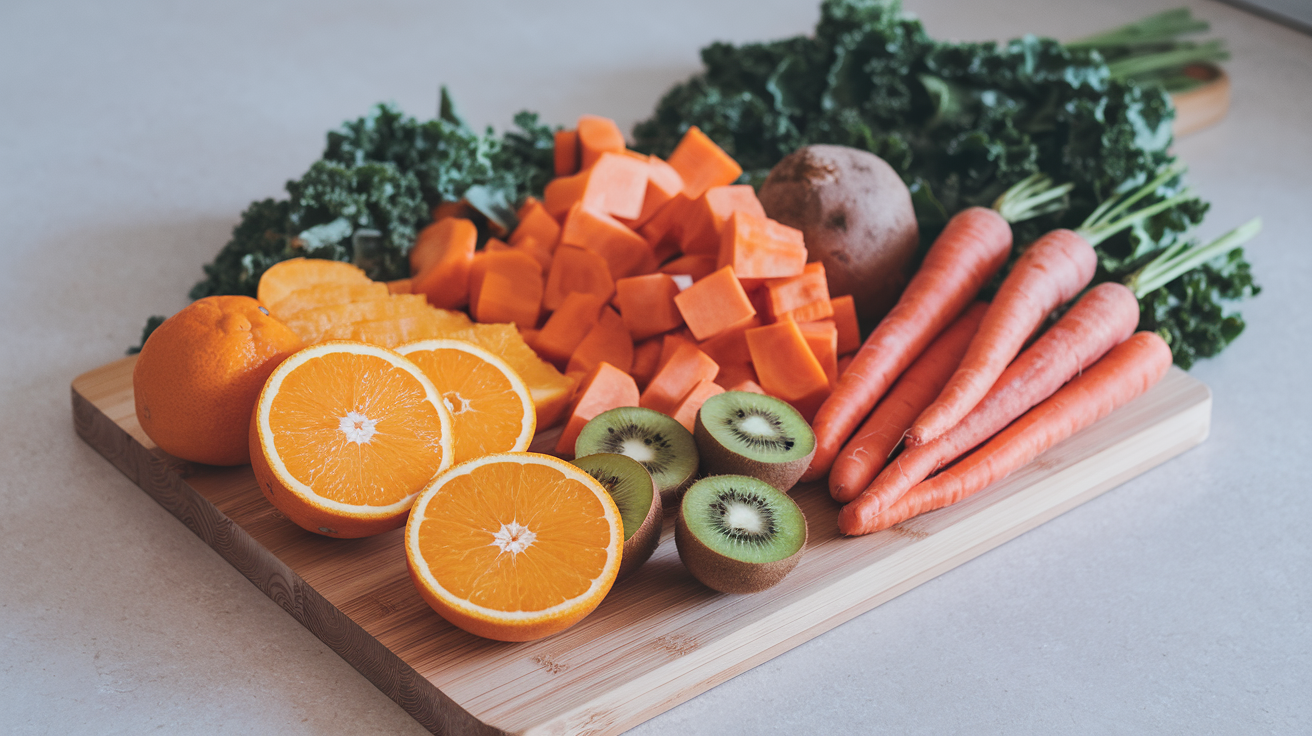
Now that we’ve explored budget-friendly grains and starches, let’s turn our attention to economical fruits and vegetables that pack a nutritional punch without breaking the bank.
Apples and bananas: Affordable fruit options
Apples and bananas are not only budget-friendly but also offer significant health benefits:
- Apples:
- Rich in antioxidants
- Linked to heart health
- Contain pectin, which may support cardiovascular function
- Bananas:
- Affordable and versatile
- Excellent source of potassium and fiber
Both fruits are long-lasting and can be easily incorporated into various dishes or enjoyed as quick, healthy snacks.
Broccoli and carrots: Vitamin-rich vegetables
These budget-friendly vegetables are nutritional powerhouses:
| Vegetable | Key Nutrients | Benefits |
|---|---|---|
| Broccoli | Sulfur compounds, Vitamin C | Powerful cancer fighter, supports immune system |
| Carrots | Vitamin A, Beta-carotene | Promotes eye health, antioxidant properties |
Both broccoli and carrots are versatile and can be eaten raw, cooked, or added to soups and stir-fries for an extra nutritional boost.
Red cabbage: Antioxidant-packed and long-lasting
Red cabbage is an often-overlooked superfood that offers exceptional value:
- Low in calories
- High in anthocyanins, which may provide cognitive benefits
- Contains cancer-fighting properties
- Long shelf life, reducing food waste
To maximize its benefits:
- Eat raw in salads or slaws
- Lightly steam or sauté to preserve nutrients
- Ferment for added probiotic benefits
By incorporating these economical fruits and vegetables into your diet, you can significantly enhance your nutrition without straining your budget. With this foundation of affordable produce, we’ll now explore other wallet-friendly superfoods that can further boost your health and well-being.
Wallet-Friendly Superfoods
Now that we’ve explored economical fruits and vegetables, let’s delve into some wallet-friendly superfoods that pack a nutritional punch without breaking the bank.
Turmeric: Anti-inflammatory spice
Turmeric, a vibrant yellow spice, is renowned for its anti-inflammatory properties. This affordable superfood contains curcumin, which may help reduce the risk of chronic diseases. Incorporating turmeric into your diet can be as simple as adding it to smoothies, rice dishes, or warm beverages.
Nuts and seeds: Nutrient-dense in moderation
Nuts and seeds are excellent sources of healthy fats, protein, and essential minerals. While they can be pricey in large quantities, a little goes a long way. Consider these budget-friendly options:
| Nut/Seed | Key Benefits |
|---|---|
| Walnuts | Omega-3 fatty acids, heart health |
| Chia seeds | High fiber, omega fatty acids |
| Pumpkin seeds | Zinc, magnesium |
Moderation is key, as nuts and seeds are calorie-dense. A small handful can provide numerous health benefits without overspending.
Popcorn: Low-calorie, high-fiber snack
Popcorn is an often-overlooked superfood that’s both affordable and nutritious. When air-popped and lightly seasoned, it’s a low-calorie snack packed with fiber. This whole grain can help with weight management and provides a satisfying crunch without the guilt.
Fermented foods: Probiotic-rich options
Fermented foods are excellent for gut health and often budget-friendly. Some accessible options include:
- Yogurt: Rich in calcium and probiotics
- Kefir: Provides essential nutrients and supports digestive health
- Kombucha: Offers detoxifying properties and digestive benefits
These probiotic-rich foods can enhance your gut microbiome and overall health without straining your wallet.
With these wallet-friendly superfoods in mind, next, we’ll explore smart shopping strategies to help you maximize your budget while maintaining a nutritious diet.
Smart Shopping Strategies
Now that we’ve explored wallet-friendly superfoods, let’s delve into smart shopping strategies to make the most of your budget while maintaining a nutritious diet.
A. Meal planning and prepping
Meal planning is a key strategy for saving money and reducing stress. By selecting recipes based on seasonal ingredients and creating a shopping list, you can avoid impulse purchases and ensure you’re getting the most nutritional bang for your buck. Meal prepping also helps minimize waste and saves time during busy weekdays.
| Benefits of Meal Planning |
|---|
| Reduces impulse purchases |
| Minimizes food waste |
| Saves time and money |
| Ensures balanced nutrition |
B. Buying in bulk and using coupons
Purchasing in bulk is a practical money-saving technique, especially for non-perishable superfoods. Here are some tips:
- Look for sales on shelf-stable items like dried legumes, whole grains, and nuts
- Store bulk items properly to maintain freshness
- Practice portion control to avoid overconsumption
- Utilize coupons for additional savings on superfoods
C. Opting for store brands
Store brands often offer comparable quality to name brands at a lower price point. When shopping for superfoods:
- Compare ingredient lists between store and name brands
- Look for certifications like USDA Organic and Non-GMO Project Verified
- Choose store brand options for staples like oats, frozen fruits, and canned vegetables
D. Purchasing seasonal and local produce
Embracing seasonal and local produce is not only cost-effective but also ensures peak nutritional value. Consider these strategies:
- Visit farmers’ markets for fresh, locally-sourced superfoods
- Learn about the seasonal availability of fruits and vegetables in your area
- Experiment with new seasonal produce to diversify your diet
- Consider frozen options for out-of-season favorites, as they’re often just as nutritious
By implementing these smart shopping strategies, you’ll be well-equipped to stock up on affordable superfoods. Next, we’ll explore cooking tips to make the most of these budget-friendly powerhouse ingredients in your daily meals.
Cooking Tips for Budget Superfoods
Now that we’ve covered smart shopping strategies, let’s explore how to make the most of your budget-friendly superfoods in the kitchen.
Incorporating superfoods into everyday meals
Integrating affordable superfoods into your daily diet is easier than you might think. Try blending nutrient-rich ingredients into smoothies, enhancing salads with seeds or legumes, or using whole grains as a base for various dishes. For instance, add quinoa to your tacos or use sweet potatoes in stir-fries for a nutritious twist on classic meals.
Simple recipes using affordable ingredients
Here are some quick and easy recipes that showcase budget-friendly superfoods:
- Quinoa and Black Bean Tacos
- Sweet Potato and Kale Stir-Fry
- Lentil and Vegetable Shepherd’s Pie
- Zucchini Noodles with Avocado Pesto
These dishes not only incorporate affordable superfoods but also offer a variety of flavors and textures to keep your meals exciting.
Preserving nutrients through proper cooking methods
To maintain the nutritional value of your superfoods, consider these cooking techniques:
| Method | Benefits | Examples |
|---|---|---|
| Steaming | Retains vitamins and minerals | Broccoli, spinach |
| Poaching | Preserves delicate nutrients | Eggs, fish |
| Minimal water cooking | Prevents nutrient loss | Carrots, peas |
Freezing leftovers to reduce waste
Maximize your budget and minimize waste by freezing leftover meals. Many superfoods freeze well, allowing you to enjoy nutritious meals throughout the week. For example:
- Freeze portions of lentil soup for quick lunches
- Store extra quinoa for easy grain bowls
- Preserve seasonal fruits for year-round smoothies
By implementing these cooking tips, you’ll be able to make the most of your affordable superfoods, ensuring both nutrition and flavor in your meals. With these strategies in mind, next, we’ll debunk some common myths about healthy eating to further empower your journey towards a budget-friendly, nutritious diet.
Debunking Myths About Healthy Eating
Now that we’ve explored cooking tips for budget superfoods, let’s debunk some common myths about healthy eating and discover how nutritious meals can be both affordable and beneficial in the long run.
A. Nutritious meals can be budget-friendly
Contrary to popular belief, maintaining a healthy diet doesn’t have to break the bank. Many nutrient-rich foods are actually less expensive than processed alternatives. By focusing on affordable powerhouse ingredients, you can create nutritious meals that are easy on your wallet. For example:
| Food Category | Budget-Friendly Options | Health Benefits |
|---|---|---|
| Vegetables | Broccoli, carrots, sweet potatoes | Rich in vitamins, antioxidants, cancer-preventive properties |
| Grains | Brown rice | High in fiber, lowers chronic disease risks |
| Legumes | Canned beans | Fiber-rich, protein source |
| Fruits | Bananas, oranges | Vitamin C, fiber, immune support |
| Protein | Canned fish, chicken breast | Economical, nutrient-dense |
B. Simplicity and creativity in meal preparation
Creating healthy meals doesn’t require complex recipes or expensive ingredients. With a bit of creativity, you can prepare nutritious dishes using simple, affordable components. Consider these ideas:
- Use frozen or canned vegetables to add nutrients to your meals
- Incorporate cost-effective starches like rice, beans, and potatoes
- Experiment with versatile proteins such as ground beef or whole chicken
C. Balancing cost and nutritional value
Finding the right balance between cost and nutrition is key to sustainable healthy eating. Here are some strategies to maximize nutritional value while minimizing expenses:
- Buy in bulk for frequently used items
- Plan meals in advance to reduce waste
- Utilize coupons and sales for healthier options
- Cook at home more often
- Repurpose leftovers to create new meals
D. Long-term benefits of investing in health through diet
While the immediate cost savings of unhealthy foods may seem appealing, investing in a nutritious diet offers significant long-term benefits. A balanced, healthy diet can:
- Lower the risk of chronic diseases like type 2 diabetes and heart disease
- Improve overall well-being and energy levels
- Reduce healthcare costs associated with poor nutrition
- Enhance mental health and cognitive function
By prioritizing affordable, nutrient-dense foods and adopting smart shopping strategies, you can reap the rewards of a healthy diet without straining your budget.

Eating healthy doesn’t have to break the bank. With the right knowledge and strategies, you can incorporate nutrient-dense superfoods into your diet without straining your wallet. From protein-packed legumes and eggs to fiber-rich oats and sweet potatoes, these affordable powerhouses offer a wide range of health benefits. By embracing frozen produce, canned fish, and seasonal fruits and vegetables, you can ensure a diverse and nutritious diet year-round.
Remember, smart shopping and meal planning are key to maximizing your budget while prioritizing your health. Get creative in the kitchen, experiment with new recipes, and don’t be afraid to substitute ingredients. By incorporating these affordable superfoods and applying the tips shared in this post, you’ll be well on your way to nourishing your body and enjoying delicious, budget-friendly meals. Start your journey towards a healthier lifestyle today – your body and your wallet will thank you.

